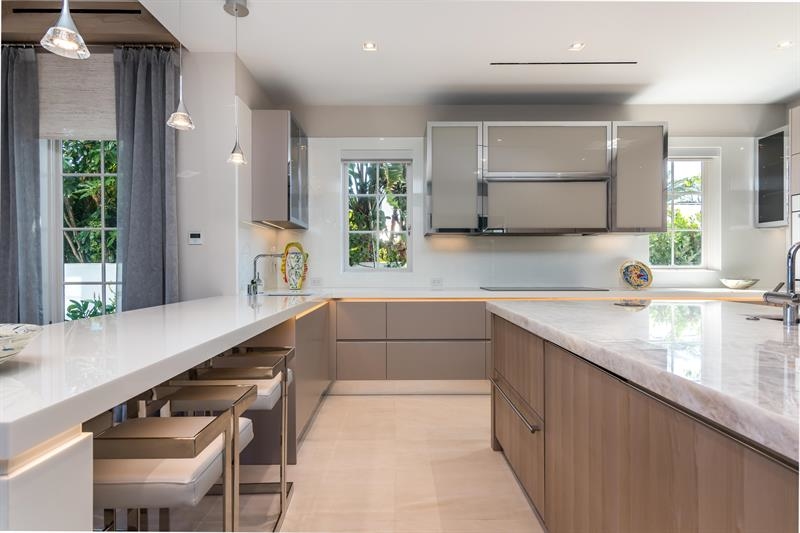Kitchen Countertops 101 – Quartz
Quartz countertops are relatively new, but they’re becoming increasingly popular because of their many good qualities. They are attractive, durable, and they don’t have some of the weaknesses of natural stone. Because they are a manufactured stone, quartz countertops are here to stay. Here is a look at their pros and cons of a quartz countertop kitchen remodel:
Quartz Countertop PROS:
Quartz is an attractive manufactured product. Because it is man-made, there is a much wider range of colors than you’ll find in natural stones, like marble or granite. The appearance of the finished engineered stone is rich and can even mimic the look of natural stones. However, unlike natural stone, you can have several slabs that look exactly the same. This makes it easy to book match veining for seamless transitions between slabs or countertop and backsplash.
Quartz also has the same durability as concrete and granite, but is a little more forgiving, so it does not chip or crack as easily. Like other hard surface countertop materials, quartz is non-porous. It resists staining much better than other materials. It stands up to juice, oil, wine, tomato, coffee and more. In terms of cleanliness, a non-porous surface means that it will not harbor bacteria or viruses. You can be confident that you are getting your quartz countertop absolutely clean, and that’s a great benefit in both the kitchen and the bathroom. Besides regular cleaning, quartz does not require nearly as much maintenance as its more porous counterparts.
Quartz Countertop CONS:
Quartz does not have many cons. It is slightly less heat resistant than granite or concrete, but it is always wise to put hot pots and pans on a trivet, rather than directly on the countertop. Quartz is often associated with a more contemporary design. Although there is a large variety of options, some people prefer the look of a more natural stone. Lastly, as a manufactured stone, you might expect some cost savings. That is not typically the case. However, they are not more expensive either. Their price point is competitive with other materials. It all comes down to what will give you the best look and use in your particular design.
